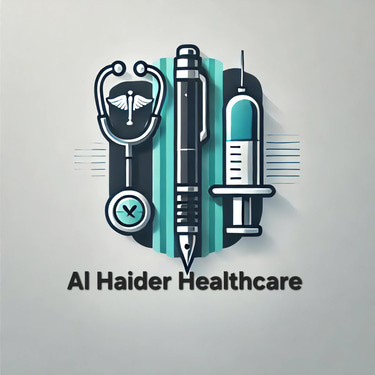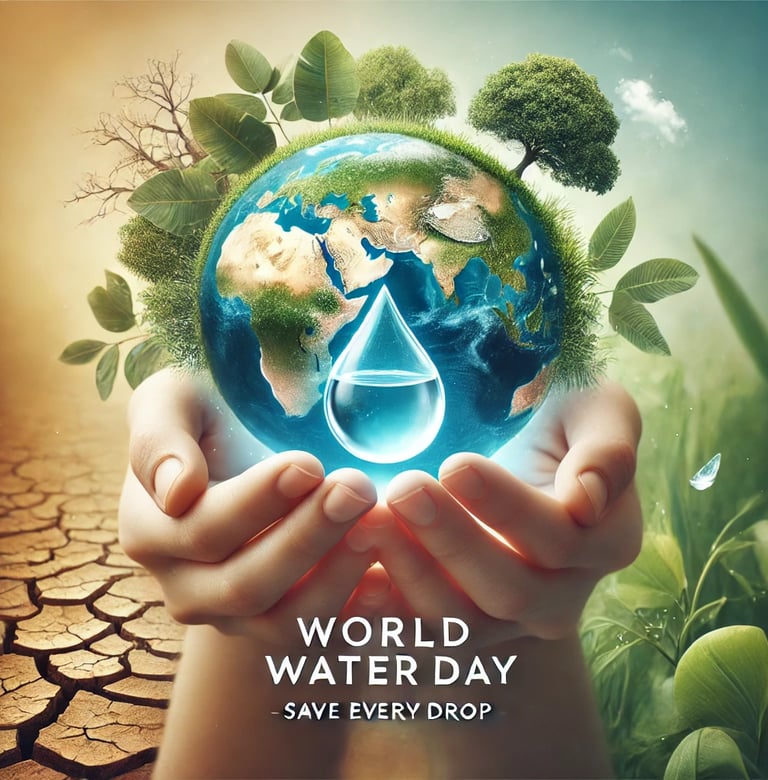Importance of Water for Health
Water is vital for numerous bodily functions, including:
Hydration & Temperature Regulation – Prevents dehydration and maintains body temperature.
Digestion & Nutrient Absorption – Aids in food breakdown and nutrient transportation.
Detoxification – Helps remove toxins through urine and sweat.
Joint & Organ Function – Lubricates joints and protects tissues.
Infection Prevention – Ensures hygiene, reducing disease transmission.
According to the World Health Organization (WHO), 2.2 billion people globally lack access to safe drinking water, increasing the risk of various diseases.
World Water Day: Importance, Risks, and Conservation
World Water Day, observed annually on March 22nd, highlights the importance of freshwater and advocates for sustainable management of water resources. Clean and safe water is essential for life, health, and economic growth. At Al Haider Healthcare, we aim to raise awareness about waterborne diseases, contamination risks, purification methods, and water conservation for a healthier future.
Waterborne Diseases & Health Risks
Contaminated water can cause severe waterborne diseases, leading to serious health consequences.
Common Waterborne Diseases:
Diarrheal Diseases (Cholera, Dysentery, Typhoid) – Caused by bacteria, viruses, or parasites in contaminated water.
Hepatitis A & E – Viral infections spread through polluted water.
Polio – Affects the nervous system, transmitted via contaminated water.
Leptospirosis – Bacterial infection from water contaminated by animal urine.
Arsenicosis & Fluorosis – Caused by chemical contamination in groundwater.
Global & India Statistics:
CDC (Centers for Disease Control and Prevention) reports 485,000 deaths annually due to diarrheal diseases.
MoHFW India (Ministry of Health and Family Welfare) states that unsafe water contributes to 20% of communicable diseases in India.
Water Contamination: Causes & Prevention
Contamination occurs due to natural and human-made factors, making water unsafe for consumption.
Common Contaminants:
Biological – Bacteria, viruses, parasites (e.g., E. coli, Salmonella, Giardia).
Chemical – Arsenic, fluoride, lead, pesticides, industrial waste.
Physical – Sediments, heavy metals from erosion and pollution.
Preventive Measures:
Boiling Water – Kills bacteria, viruses, and parasites.
Chlorination – Disinfects water and kills microbes.
Filtration & Reverse Osmosis (RO) – Removes harmful contaminants.
Proper Waste Disposal – Prevents pollutants from entering water sources.
Rainwater Harvesting – Reduces groundwater depletion.
Water Purification Methods
Ensuring safe drinking water requires effective purification methods.
Household Purification Methods:
Boiling – Simple and effective but energy-consuming.
Filtration – Removes bacteria, heavy metals, and sediments.
UV Purification – Destroys microorganisms without altering water composition.
Chlorination – Kills bacteria but may leave residual chemicals.
Activated Carbon Filters – Absorbs contaminants, improves taste and odor.
Community & Industrial Solutions:
Water Treatment Plants – Large-scale purification for urban areas.
Desalination – Converts seawater into freshwater.
Wastewater Recycling – Treats and reuses water for irrigation and industries.
How to Preserve Water for the Future
As freshwater becomes scarce, conservation efforts are crucial.
Ways to Save Water:
Reduce Water Waste – Fix leaks, use water-efficient appliances.
Rainwater Harvesting – Store rainwater for household and agricultural use.
Sustainable Irrigation – Drip irrigation saves 30-50% of water.
Pollution Control – Prevent industrial and plastic waste from contaminating water bodies.
Public Awareness Campaigns – Educate communities on water conservation.
According to UNICEF, by 2050, 50% of the world’s population will live in water-stressed areas.
Conclusion
Water is a precious resource, essential for survival and health. By ensuring clean drinking water, reducing contamination, adopting purification methods, and preserving water sources, we can protect future generations from water scarcity and disease.
On World Water Day, let’s pledge to conserve water and promote hygiene for a healthier, sustainable world.
For more health updates, visit Al Haider Healthcare (ahchospital.in) or consult your healthcare provider.
References
World Health Organization (WHO) – https://www.who.int
Centers for Disease Control and Prevention (CDC) – https://www.cdc.gov
Ministry of Health and Family Welfare, India (MoHFW) – https://www.mohfw.gov.in
UNICEF – https://www.unicef.org


